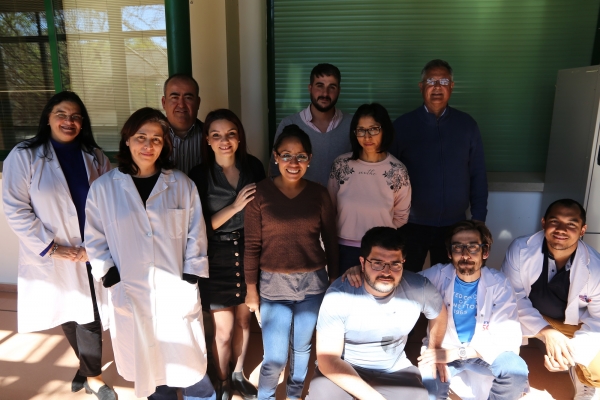The camel breeding sector is widespread in North Africa, where the production of meat and milk from this animal predominates, as well as its use as a work animal and a tourist attraction for those who travel the desert perched between their humps. In spite of its implantation and the three-fold use of the animal (meat, milk and work), the sector is quite fragmented, and suffers from gaps through which potential profits are squandered.
The organisation of the breeding and optimisation of camel production systems, through the selection of the best animals, together with a transnationalisation of the chain, allowing for trade in food products in Europe's high-value markets, such as its gourmet sector, emerge as lines of action for the economic development of the local communities that work with them.
In this context, the European project C.A.R.A.V.A.N. (Toward a CAmel tRAnsnational VAlue chain) was launched, in which Spain, France, Italy, Tunisia, Algeria and Morocco are working together in order to bolster the camel sector through strategies such as improvement genetics, to convert it into an attractive sector that increases producers' quality of life and helps to stabilise populations, preventing those who live in the Mediterranean's disadvantaged desert areas from having to leave their territories.
Juan Vicente Delgado, a Professor of Genetics at the University of Cordoba and the head of the "Domestic Animal Genetic Resources Improvement and Conservation" research group, is responsible for coordinating this project, with clear North-South transfer overtones, as they seek to establish a system for modern and effective genetic selection in dromedaries.
Before establishing the genetic selection protocol, previous steps were taken: a survey of producers to determine what characteristics were needed to improve the specimens. Stronger camels? Animals with a better footfall? No. What most concerns those who work with this mammal is its temperament. The difficulty of dealing with these animals is what makes necessary more hours of work, and more personnel, to control them.
This is very important in the Tourism sector (the main one in Spain, where there is only one milking operation), but also in the meat and milk sectors, since improvements in behaviour lead to a reduction in personnel costs, and an increase in profits.
The UCO works on genetic improvement through the development of its own linear morphological assessment protocol that makes it possible to explain the relationship between form and function by identifying variables in camel morphology that are strongly related to performance and work capacity.
Given the impossibility of direct linear assessment, due to the difficulties involved in the physical handling of the camel, the study proposed as a solution their study through films that show the specimens on a 360º axis and photographs that are later analysed by a specific software program. With regards to the behavioural aspect, the research group is working on a protocol to identify the cognitive functions of the camel, in order to select the most docile animals, and those that learn fastest.
Until 2020 work will be done on the assessment of animals, and their genetic evaluation, but also on solving critical points, such as health issues, which currently prevent the mass consumption of products derived from camels in the European Union.
With producers certain that the investment they make in the breeding and taming of a camel will not be in vain because of its behaviour (generating economic losses), and sure of extensive and robust commercial routes for their products, there would be a whole new and promising future for those populations that depend on the camel to sustain their way of life.


